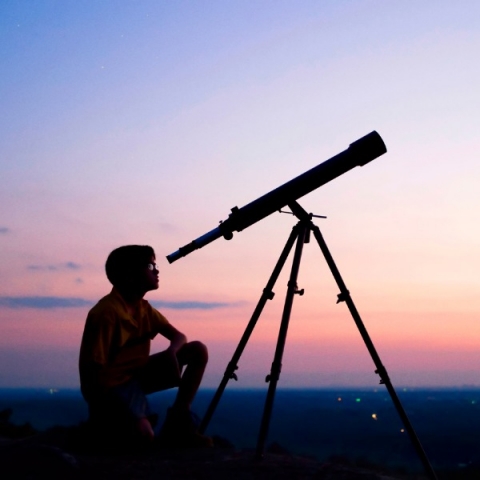The universe is enormous and mysterious, and exploring it can be exciting and rewarding. An optical telescope is one of the best tools for investigating the universe. An optical telescope, like the redcat 51, is a device that gathers and focuses light from faraway objects in space, allowing humans to see them in greater detail. The world of optics telescopes and their extraordinary potential will be explored in this article.
Types of Optics Telescopes
There are several types of optics telescopes, each with its unique design and purpose. The most common types are refracting, reflecting, and catadioptric telescopes.
Refracting telescopes use lenses to bend and focus light. They are the most common type of telescope and are often used for stargazing and observing planets.
On the other hand, reflecting telescopes use mirrors to reflect and focus light, and they are often more massive than refracting telescopes and can provide higher image resolution.
Catadioptric telescopes combine lenses and mirrors to gather and focus light. They are known for their compact design and are often used for astrophotography.
Features to Consider
When choosing an optics telescope, several features should be considered. The most crucial factor is the aperture, which refers to the diameter of the telescope’s primary lens or mirror. A larger aperture can create clearer and brighter images by permitting more light to enter the telescope.
The magnification ability of a telescope is determined by the focal length, which is another important aspect to take into account. While a longer focal length provides greater magnification, it also results in a narrower field of view.
Other features to consider are the mount type, which determines the telescope’s stability, and the accessories that come with the telescope, such as eyepieces and filters.
Benefits of Optics Telescopes
Optics telescopes provide several benefits, both for amateur astronomers and professionals. For amateur astronomers, a telescope can offer an exciting hobby and an opportunity to explore the cosmos from the comfort of their backyard.
A telescope lets you observe planets, stars, galaxies, and other celestial objects in detail. You can also track the movements of planets and stars and observe changes in their brightness and appearance.
For professionals, optics telescopes are essential tools for scientific research. Telescopes allow astronomers to study the cosmos and gather data to help people understand the universe’s origins and evolution.
In addition to the benefits mentioned above, optics telescopes provide a unique perspective on ones place in the universe. Observing the vastness of space can offer a sense of wonder and awe that is difficult to replicate in any other way.
Telescopes can also serve as valuable educational tools, introducing people of all ages to the wonders of astronomy and inspiring future scientists and researchers.
Another benefit of optics telescopes is their versatility. Telescopes can be used for various purposes beyond astronomy, including bird watching, wildlife observation, and surveillance. This versatility makes telescopes a valuable investment for those looking for a tool that can serve multiple purposes.
Finally, optics telescopes offer an opportunity to connect with others interested in astronomy. Astronomy clubs and organizations provide a community of like-minded individuals passionate about exploring the cosmos. Astronomers can share knowledge, learn new techniques, and make new friends through these communities.
Tips for Using an Optics Telescope
Using an optics telescope like the redcat 51 requires some knowledge and skill. Here are a few tips to help you get the most out of your telescope:
- Make sure your telescope is set up correctly and aligned with the stars. A misaligned telescope will result in blurry and distorted images.
- Use a low-magnification eyepiece when starting. Higher magnification requires more skill and experience to use effectively.
- Observe on clear and night for the best visibility. Light pollution can significantly impact the quality of your images.
- Be patient and take your time. Observing the cosmos requires patience and a willingness to wait for the right conditions.
Optic telescopes like the redcat 51 are amazing tools that allow people to explore the universe and find new mysteries. A telescope may provide a lifetime of excitement and discovery, whether you are an amateur or a professional astronomer. You may explore the expanse of the universe and discover its myriad secrets with the correct telescope and some time and expertise.
